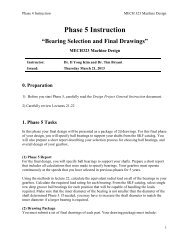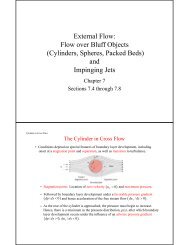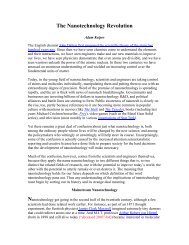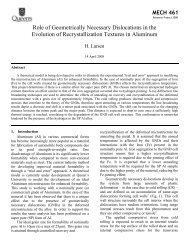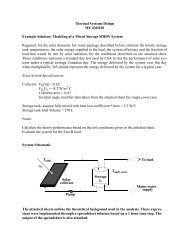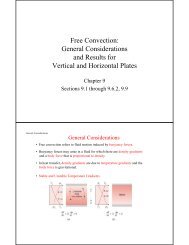Numerical Study of Passive and Active Flow Separation Control ...
Numerical Study of Passive and Active Flow Separation Control ...
Numerical Study of Passive and Active Flow Separation Control ...
Create successful ePaper yourself
Turn your PDF publications into a flip-book with our unique Google optimized e-Paper software.
velocity. The negative value is shown by dashed contours. The reattachment length is<br />
about 3.7h, which is consistent with the experimental data [2] <strong>and</strong> numerical results with<br />
various immersed boundary methods [38].<br />
Fig. 1. Mesh near backward-facing step<br />
Fig. 2. Contours <strong>of</strong> streamwise velocity in backward-facing step flow<br />
In the test case <strong>of</strong> flow past the circular cylinder, instead <strong>of</strong> using a Cartesian grid, the<br />
56D × 17D domain is partitioned by a curvilinear mesh with 364×259 grid points, where<br />
D is the diameter <strong>of</strong> the cylinder. The mesh is designed properly such that the immersed<br />
boundary (surface <strong>of</strong> the cylinder) conforms to the grid line <strong>and</strong> the mesh is clustered<br />
near the surface <strong>of</strong> the cylinder, as shown in Fig. 2.<br />
The purpose <strong>of</strong> this is to avoid numerical interpolation in the immersed boundary<br />
method, thus the no-slip condition can be directly imposed on grid nodes that represent<br />
the surface <strong>of</strong> the cylinder. Zero-velocity is specified at the interior nodes <strong>of</strong> the cylinder.<br />
The Reynolds number based on freestream <strong>and</strong> diameter <strong>of</strong> the cylinder is 40<br />
corresponding to the steady flow. A mesh with 364×259 grid points was used in the<br />
computation.<br />
The contours <strong>of</strong> streamwise velocity are plotted in Fig. 4, where the negative contours<br />
are dashed. Fig. 5 shows the streamlines <strong>of</strong> the steady flow, where a, b, L, <strong>and</strong> θ<br />
represent the characteristic parameters used to describe the size <strong>and</strong> location <strong>of</strong> the<br />
10



